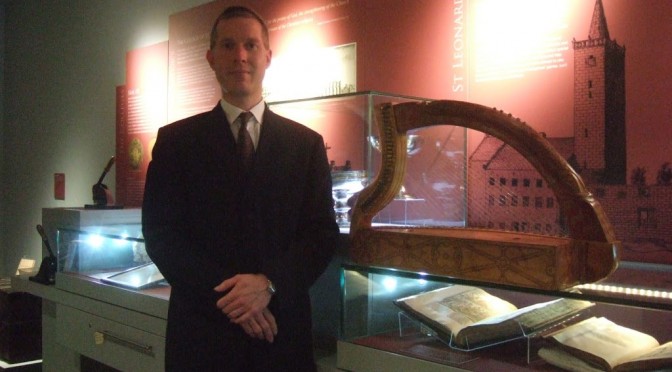 Today I presented a lunchtime talk for the Museum of the University of St Andrews, in their medieval gallery. The talk was to present and describe and demonstrate the replica Queen Mary harp. The medieval gallery of the museum holds some very interesting early treasures of the university, including its three exquisite silver-gilt 15th century maces. However these were not in their display case today, as they are being paraded up and down the streets of St Andrews during the Graduation processions.
Today I presented a lunchtime talk for the Museum of the University of St Andrews, in their medieval gallery. The talk was to present and describe and demonstrate the replica Queen Mary harp. The medieval gallery of the museum holds some very interesting early treasures of the university, including its three exquisite silver-gilt 15th century maces. However these were not in their display case today, as they are being paraded up and down the streets of St Andrews during the Graduation processions.
Before the talk proper, there was a special session for blind and partially sighted people. The museum staff had prepared a special “audio description” of the harp, and embossed line drawings of it, and the blind and partially sighted attendees also had lots of opportunity to touch and feel the carving and decoration on the harp.
For the talk itself I concentrated on the ceremonial music of the old harp traditions. I tried to tie the discussion in with the objects on display; “Gosteg yr Halen” from the Robert ap Huw manuscript went with a 16th century silver salt cellar; I read a translation from George Buchanan’s history of Scotland, a first edition of which is on display in the gallery; and we compared both the decoration on the harp as well as the structure of the music with a carved Pictish cross slab that stands in the museum.
Finally, to tie in with the 600th anniversary of the founding of the University, in 1411, I played a piece of music for another 600th anniversary: “the Battle of Harlaw”, which commemorates and describes this famous and bloody battle which was fought in Aberdeenshire in July 1411.
